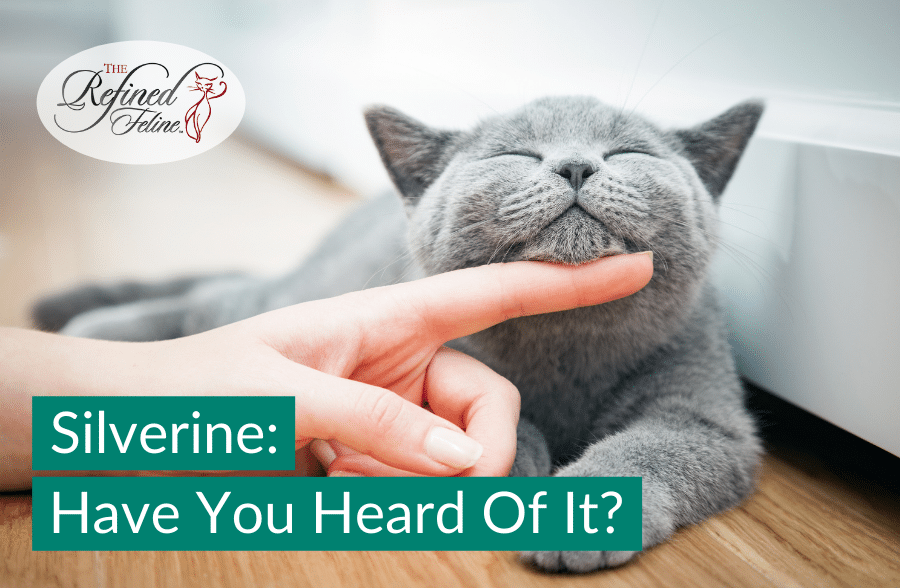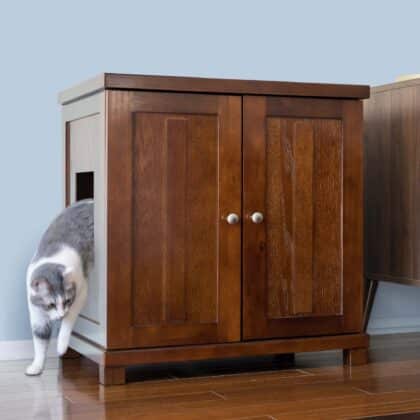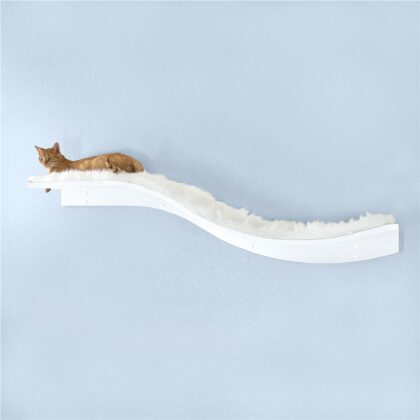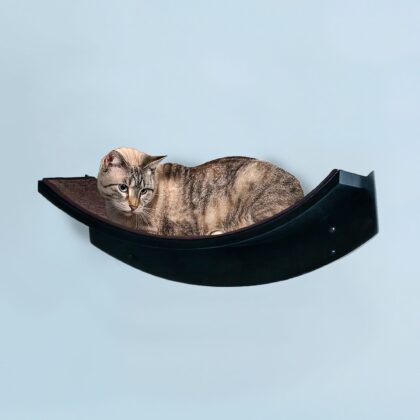
Silvervine: Heard of This Catnip Alternative?
Cats and catnip go together like peanut butter and jelly. The word ‘cat’ is even in ‘catnip’! However, there’s another option available when it comes to satisfying your cat’s playful side, and that is silvervine. If you haven’t heard of silvervine, read on to learn more about it from The Refined Feline
What Is Silvervine?
Found in Asia, it’s often referred to as the “Matatabi dance” since cats react in a similar way to catnip. While catnip is a herbaceous plant, silvervine is a fruit-bearing vine. It grows in mountainous regions of China, Korea, Japan, and Eastern Russia. Silvervine will produce little white flowers with yellow centers for about a month in the summertime. Then in October, the vine will sprout egg-shaped fruit for a month. Asian regions have been using silvervine for a long time, but it has only recently become common in the United States. Japanese Kampo medicine even uses silvervine leaves to treat back pain, cancer, urinary tract infections, and kidney disease.
Silvervine vs. Catnip
Researchers are finding that nearly half of all domestic cats don’t react to catnip. Meanwhile, nearly 80% of cats responded to the “highs” of silvervine. Catnip has only one chemical called nepetalactone that gives cats their playful edge. Silvervine, on the other hand, has two main chemicals that cats respond to, called actinide and dihydroactinidiolide. It also contains around six other active ingredients similar to the chemical found in catnip.
So, if you notice your cat doesn’t react to catnip, it may be time to try something new. Chewing on silvervine sticks can even help decrease the amount of tartar on your cat’s teeth. It also has other health benefits that help cats with anxiety, arthritis, nausea, and high blood pressure. It may even help your chunky cat lose some weight since they’ll be more active.
What Forms Does Silvervine Come In?
Silvervine works just like catnip and is ground up to have a similar appearance. There are multiple parts of the vine that you can purchase for your cat’s enjoyment. The part of silvervine that cats seem to respond to the most is the fruit galls. These fruit galls can be purchased as-is or ground up. All parts of it are dried out like catnip and can include the fruit, stems, leaves, and buds. The only cats that are known to not respond to silvervine are kittens under eight months old and pregnant females.
Silvervine sticks that promote a cat’s dental health are not a part of the vine, though. These sticks are typically just infused with the scent of silvervine. So, if you do purchase the sticks, be sure to keep an eye on your cats when they’re playing with them. Parts of the stick can break off and become a choking hazard. Giving your cats part of the actual silvervine plant though will elicit a much stronger response.
What Are The Effects of It?
The effects of silvervine are similar to that of catnip when there’s a reaction. Cats will drool, roll around, climb, jump and bounce off the walls (especially if you have cat shelves). Usually, people think of cats becoming hyperactive and zooming around the house but some may become more relaxed! Either way, most cats will thoroughly enjoy it in any form and you’ll enjoy bonding with your cat. The “high” your cat will experience will typically last anywhere from 5 to 30 minutes but could even last as long as an hour.
Is There Such A Thing As Too Much Silvervine?
Just like catnip, silvervine can be used every day. You can sprinkle it on their favorite cat bed, on their food, toys, scratching posts, and more! There is no such thing as too much, so don’t worry about your cats getting too much. Indoor cats especially will benefit from silvervine and all of the entertainment and activity that you can provide.
Related: Ways to Keep Your Cat Healthy & Safe Indoors
Give It A Shot!
There is no downside to giving your cats silvervine. The worst-case scenario is that they don’t react to it! The best-case scenario is that they’ll have some playtime with their favorite human and get some extra exercise.










